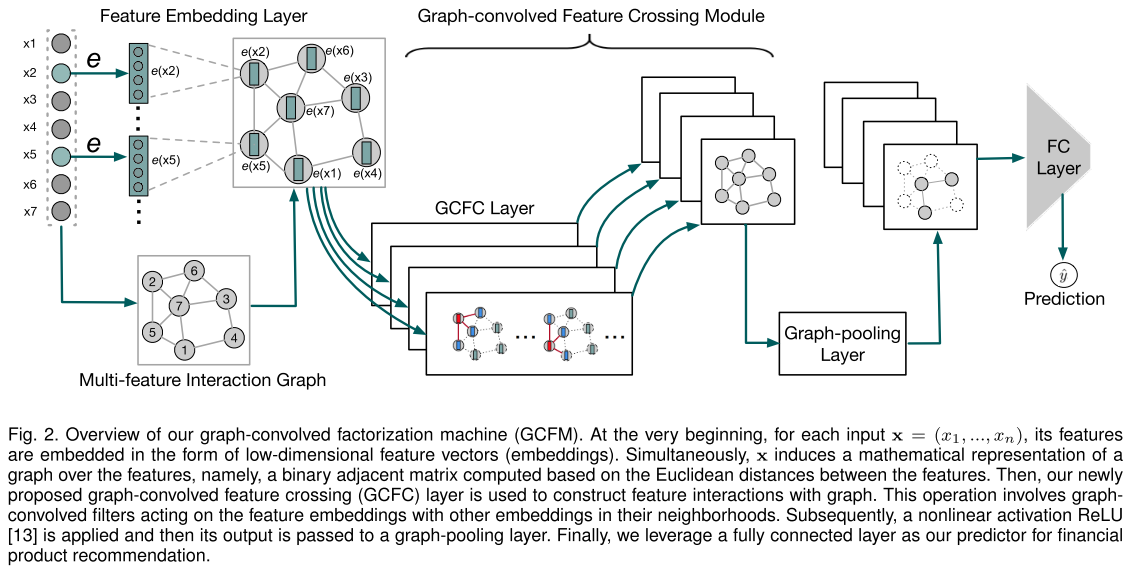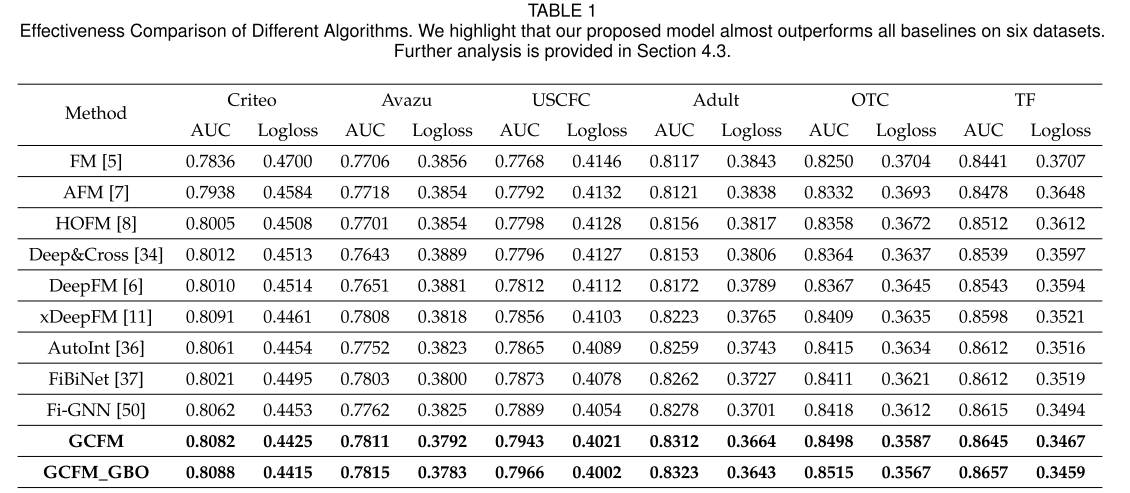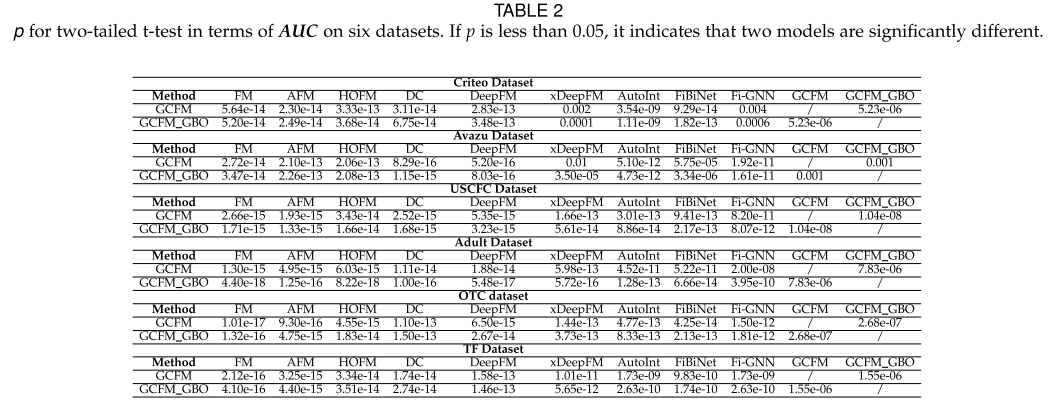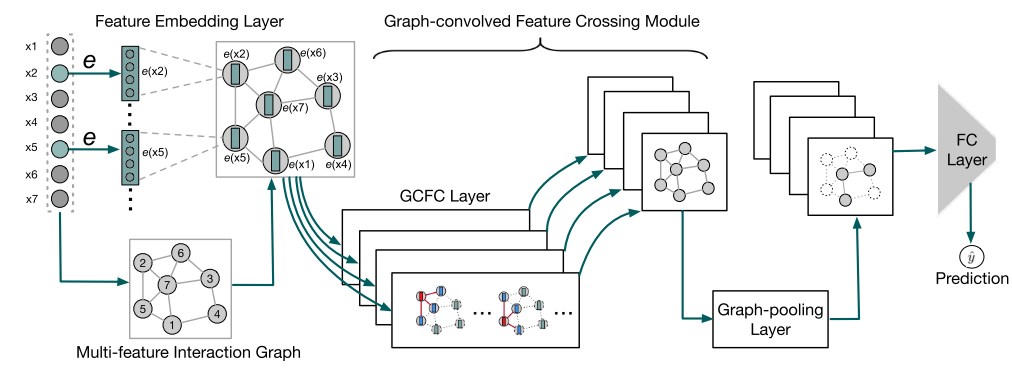Abstract
Factorization machines (FMs) and their neural network variants (neural FMs) for modeling second-order feature interactions are effective in building modern recommendation systems. However, feature interactions are based upon pairs of features, whereas multi-features correlations commonly arise in real-world financial product recommendation scenarios. We propose an effective neural recommender system, graph-convolved factorization machine (GCFM), with the spirit of the symbolic graph reasoning principle that provides lightweight and interpretable recommendation suggestions. Given a sample for the recommendation, GCFM constructs the corresponding dense feature embeddings and computes the sample-specific feature relationship graph. Then, a multi-filter graph-convolved feature crossing (GCFC) layer for feature embeddings establishes cross features with their neighboring embeddings. GCFM thus extends the feature interactions from pairs to neighbors to capture more comprehensive and explainable information while simultaneously reaping the advantages of representation learning. To exploit these capabilities, we apply a Graph Bayesian Optimization (GBO). During training, our GBO automatically optimizes our GCFM, including training hyperparameters and architecture hyperparameters. Besides, we conduct extensive experiments on two public financial applications benchmarks, USCFC and OTC, and two real-world datasets that we collect offline. Our GCFM significantly outperforms state-of-the-art algorithms and shows its interpretability in recommendation tasks. We further extend our model to online real-world applications, showing an appealing human-level decision intelligence in real scenarios.
Framework
Existing methods exhaustively group features with certain numbers and consider their k-order feature interactions no matter how closely related or negatively irrelevant they are, which is extreme high-cost and easily leads to feature vanishing as discussed above. To address these problems, we proposed a novel Graph-Convolved Factorization Machine. GCFM constructs the multi-feature interaction graph to built connections among features and sequentially learns their trainable interaction weights in the graph-convoluted feature crossing module. Specially, we construct the multi-feature interaction graph from raw inputs and derive a binary adjacent matrix based on the Euclidean distance between features. Subsequently, GCFM learns adaptively graph filters, i.e., interaction weights, and with them deploys the graph-convoluted feature crossing. During features crossing, each feature will interact with its neighbor features; in the process of crossing, the neighbor features propagate their feature messages to the central features respectively. Furthermore, a graph-convoluted feature crossing strategy avoids feature vanishing because it is able to strengthen closely related features and weaken negatively irrelevant features. Finally, the derived embeddings are compressed by a graph pooling layer and then are concatenated together to feed a predictor head in GCFM, which produces our recommendation outcome. The pipeline of our proposed GCFM is shown in Fig.2.

Experiment


Conclusion
This paper presents a novel Graph-Convolved Factorization Machine (GCFM) to improve RS performance via graph-based modeling of multi-feature interactions. Since conventional k-order feature interactions are extremely rigid, high-cost and easily leads to feature vanishing, to address these issues, the proposed GCFM models multifeature interactions with a graph. Each feature needs to interact with its neighbor features and their connection weights can strengthen the closely related features and weaken the negatively irrelevant features. Furthermore, our GCFM achieves state-of-the-art performance and presents a superior interpretability in recommendation tasks. We further extend our model to online realworld applications, which show an appealing humanlevel decision intelligence in real scenarios. In the future, we will explore the possibility of adding causal reasoning to our GCFM to further improve personalized recommendation.
Acknowledgement
This work was supported in part by NSFC (No.62006253, U181146, 61836012), and State Key Development Program (No.2018YFC0830103).
References


